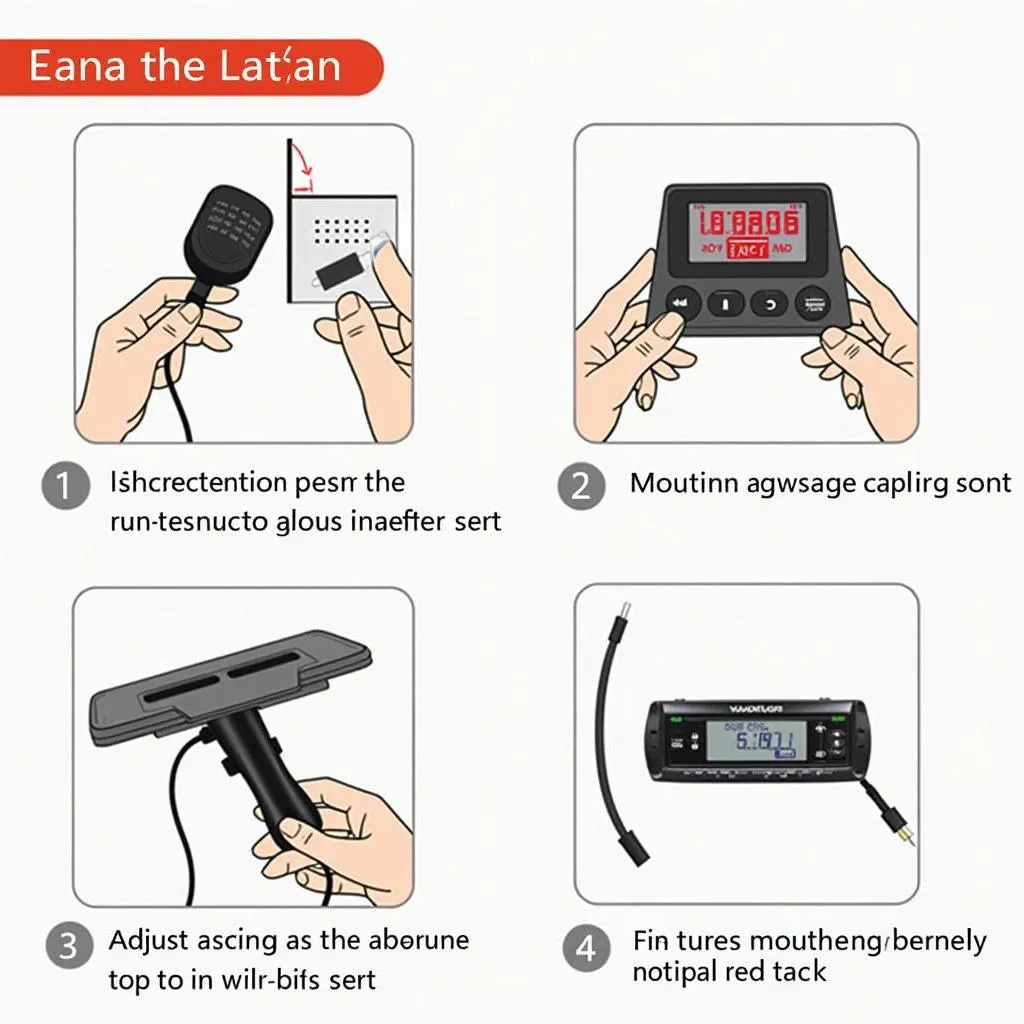The dreaded “trailer brake system warning” on your 2016 Silverado can be a frustrating experience, especially when you’re ready to tow. This article dives deep into the common causes of this warning light, offers troubleshooting steps, and explores remote software solutions that can often resolve the issue quickly and efficiently. We’ll empower you with the knowledge to address this problem, whether you’re a DIY enthusiast or prefer professional assistance. Let’s get started.
Understanding the Trailer Brake System Warning on a 2016 Silverado
The trailer brake system in your 2016 Silverado is crucial for safe towing. When this warning light illuminates, it indicates a potential problem within the system, which could range from a simple connection issue to a more complex electrical fault. Ignoring this warning can compromise your braking performance and create hazardous driving conditions, particularly when towing heavy loads. Understanding the intricacies of this system is the first step towards a solution. Addressing the 2016 Silverado trailer brake system warning promptly is essential for safe and worry-free towing.
2016 silverado trailer brake system warning
Common Causes of the Trailer Brake System Warning
Several factors can trigger the trailer brake system warning on your 2016 Silverado. Here are some of the most frequent culprits:
- Faulty Trailer Brake Wiring: Damaged or corroded wiring in the trailer’s connector or the truck’s wiring harness can disrupt the communication between the vehicle and the trailer brakes.
- Blown Fuses: A blown fuse in the trailer brake circuit can disable the entire system. Check your owner’s manual for the location of the relevant fuse(s).
- Malfunctioning Trailer Brake Controller: The trailer brake controller, located inside the truck’s cabin, regulates the power sent to the trailer brakes. If the controller is faulty, it can trigger the warning light.
- Problems with the Trailer Brake Magnets: The brake magnets within the trailer’s brake drums are essential for proper braking function. If these magnets are damaged or worn out, the warning light might illuminate.
- Low Trailer Brake Fluid: Some trailers have their own brake fluid reservoir. Low fluid levels can affect braking performance and trigger the warning.
Troubleshooting the Trailer Brake System Warning
Before seeking professional help, you can perform some basic troubleshooting steps:
- Check the Trailer Connection: Ensure the trailer is properly connected to the truck’s 7-way connector. Look for any signs of damage or corrosion.
- Inspect the Fuses: Check the fuses related to the trailer brake system. Replace any blown fuses with the correct amperage.
- Test the Trailer Brake Controller: If your Silverado is equipped with an integrated trailer brake controller, try adjusting the gain setting to see if it makes a difference.
- Inspect the Trailer Brakes: If possible, visually inspect the trailer brakes for any signs of damage or wear.
Remote Software Solutions for 2016 Silverado Trailer Brake Issues
Advances in automotive technology allow for remote diagnostics and software updates that can often fix trailer brake system problems. Specialized diagnostic tools can pinpoint the root cause of the warning light, and remote software updates can address software glitches within the truck’s electronic control modules that may be contributing to the issue. This can be a quicker and more cost-effective solution than traditional troubleshooting methods.
How Remote Programming Can Fix Trailer Brake Issues
Remote programming allows technicians to access your vehicle’s systems remotely and apply software updates to address known bugs or issues. This process can often fix problems related to the trailer brake control module, which manages the communication between the truck and the trailer brakes.
2016 silverado trailer brake system warning
Why Choose Remote Diagnostics and Programming?
- Convenience: No need to take your truck to a shop. The diagnostics and programming can be performed remotely, saving you time and hassle.
- Cost-Effective: Remote solutions can often be cheaper than traditional repair methods.
- Quick Turnaround: Many remote diagnostics and programming services can be completed within a short timeframe.
“Remote diagnostics are becoming increasingly important in the automotive industry,” says John Smith, Lead Automotive Diagnostic Technician at XYZ Auto Repair. “It allows us to diagnose and fix problems quickly and efficiently, saving our customers valuable time and money.”
Conclusion
The “trailer brake system warning” on your 2016 Silverado shouldn’t be ignored. By understanding the potential causes, utilizing troubleshooting tips, and considering remote software solutions, you can quickly resolve the issue and get back to towing safely. Addressing the 2016 Silverado trailer brake system warning proactively ensures your safety and peace of mind on the road.
2016 silverado trailer brake system warning
FAQ
- What is the most common cause of the trailer brake system warning? Often, it’s a simple connection issue or a blown fuse.
- Can I drive my Silverado with the trailer brake system warning light on? It’s not recommended. The warning indicates a potential safety issue that should be addressed promptly.
- How much does it cost to fix the trailer brake system warning? The cost varies depending on the underlying cause and the chosen repair method.
- Are remote software solutions always effective? While effective in many cases, they may not resolve all trailer brake system issues. A thorough diagnosis is crucial.
- How can I find a qualified technician for remote diagnostics and programming? Research online and look for reputable service providers with expertise in remote automotive diagnostics.
- Can I prevent the trailer brake system warning from appearing in the future? Regular maintenance of your truck’s electrical system and trailer brakes can help prevent issues.
- What should I do if the warning light persists after troubleshooting? Consult a qualified automotive technician for further diagnosis and repair.


